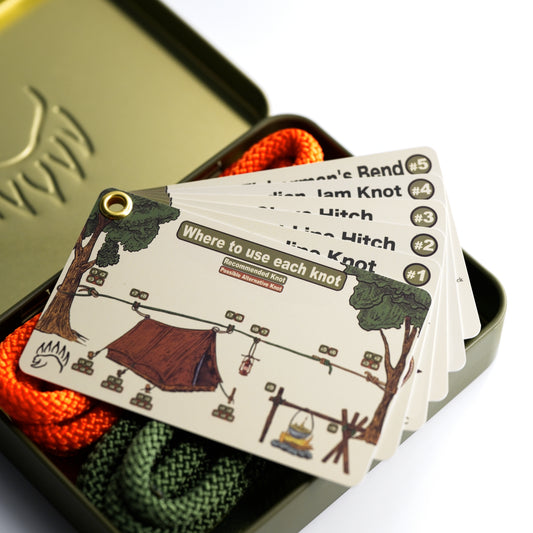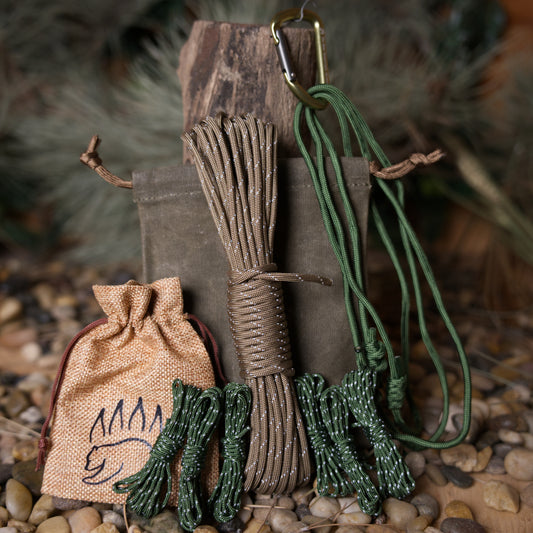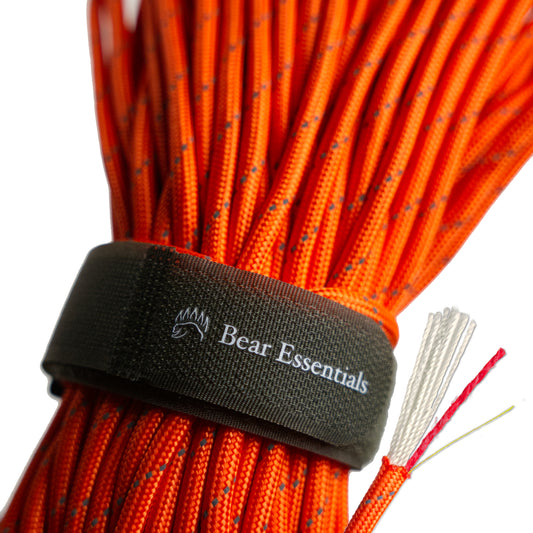How to Tie the Nail Knot
Usage
The Nail Knot is commonly used in flyfishing to securely join a fly line to a leader. It creates a smooth, low-profile connection that easily passes through rod guides, making it ideal for precise casts.
Why Learn the Nail Knot?
The Nail Knot is a must for anglers seeking reliable line-to-leader connections. Its sleek design ensures smooth casting and strong hold, making it perfect for fishing precision.
Common Uses
-
Fishing:
- Connects fly line to leader for seamless casting.
- Secures backing to fly line in big-game setups.
-
Flyfishing:
- Joins fly line to leader for precise presentations.
- Attaches backing for deep-running fish.
ABOK Number
(Ashley Book of Knots)
Other Names
Category
|
Notable Features
- Low Profile: Creates a smooth join that glides through rod guides.
- Strong Hold: Securely binds fly line to leader under strain.
- Fishing Precision: Maintains casting accuracy with minimal drag.
- Versatile Use: Works with various leader materials like monofilament.
- Compact Form: Reduces snags compared to bulkier knots.
Variations
(No true variations mentioned; section left blank.)
Similar Knots
Double Uni Knot vs. Nail Knot
- Pros: Easier to tie without tools, versatile for various line types.
- Cons: Bulkier, less smooth through rod guides than the Nail Knot.
Albright Knot vs. Nail Knot
- Pros: Simpler to tie and works with mismatched line diameters.
- Cons: Less streamlined, causing more drag during casting.
History
The Nail Knot likely originated in flyfishing communities, designed to create a smooth connection between fly line and leader for precise casting. Its reliance on a tool like a nail or tube reflects early anglers’ ingenuity, though modern variations use needles or hollow tools.
Security Level
The Nail Knot is highly reliable for flyfishing when tied correctly, securely joining fly line to leader under typical casting and fighting loads. For heavier fish, ensure 6-7 wraps and check for snug wraps. A drop of glue can enhance security for critical applications, though the knot’s strength depends on precise tying.
Downsides
- Tool requirement: Needs a nail or tube, complicating field tying.
- Learning curve: Requires practice for tight, even wraps.
Structure
- Place a small tube or nail alongside the fly line, with the leader’s end parallel to the fly line, pointing toward the line’s end.
- Wrap the leader around the tube and fly line 5-7 times, working toward the fly line’s end, keeping wraps tight and even.
- Thread the leader’s end through the tube or alongside the nail, exiting at the fly line’s end.
- Remove the tube or nail carefully, then pull both ends of the leader to tighten the wraps around the fly line.
- Trim excess leader and fly line ends, ensuring a smooth, snug knot.
Pro Tip: Use a hollow tube (like a pen barrel) for easier leader threading. Keep wraps tight and aligned to prevent slipping. Moisten the knot before tightening to reduce friction.
FAQ
Is the Nail Knot strong enough for flyfishing?
Yes, it’s reliable for most flyfishing scenarios if tied with 5-7 tight wraps.
What’s the best tool for tying the Nail Knot?
A small hollow tube or needle simplifies threading and ensures a neat knot.
How does the Nail Knot compare to the Albright Knot?
It’s sleeker for casting but needs a tool, unlike the simpler Albright.
Can the Nail Knot be used with braided line?
It’s less effective with braid; use knots like the Double Uni for braided connections.
Why choose the Nail Knot over a loop-to-loop connection?
It’s smoother through guides, reducing drag for precise casts.
Important Notes on Safety
Common failure points include loose wraps or improper tightening. Always verify wraps are even and the knot is snug before casting. Check leader and fly line for wear before tying. Ensure 5-7 wraps for adequate strength. Practice tying with a tool in low-stakes settings.









